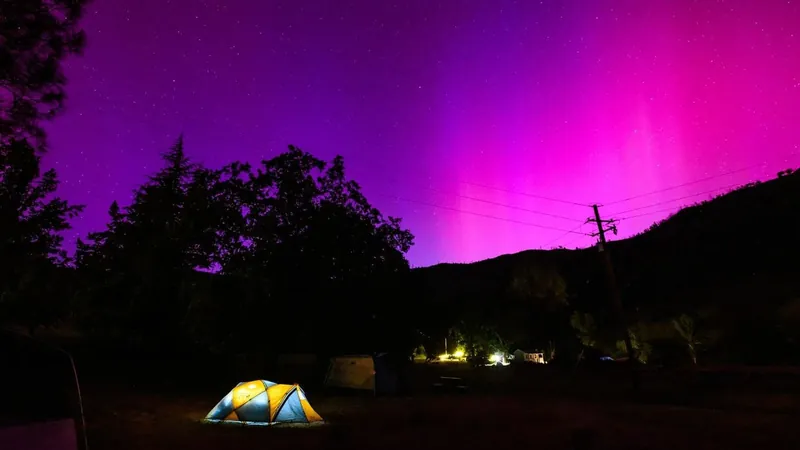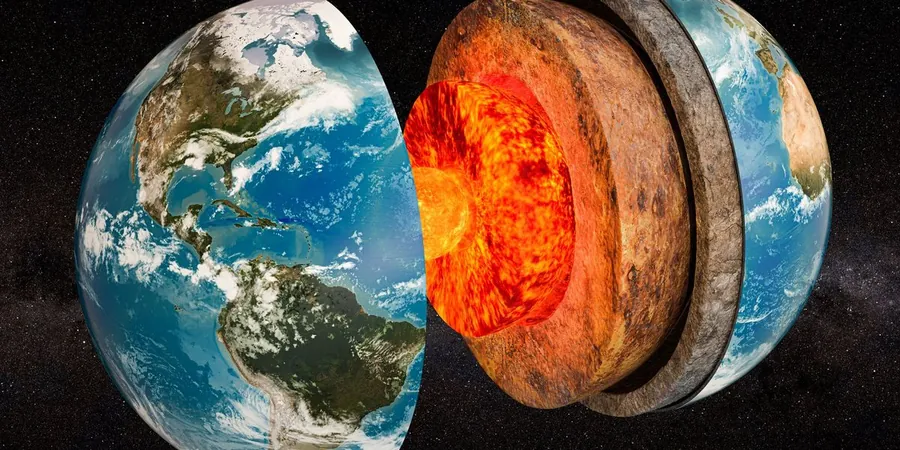
Northern Lights Alert: Don’t Miss Your Chance to Witness the Aurora Borealis Tonight!
2024-11-13
Author: Ling
Summary
Excitement is in the air as parts of the northern United States are primed for a stunning display of the northern lights this Wednesday night! According to the National Oceanic and Atmospheric Administration (NOAA), viewers may have additional opportunities to catch this mesmerizing phenomenon through the weekend.
Where Can You See the Northern Lights?
The aurora borealis is expected to be most visible in Northern Canada and Alaska, where the chances are particularly high for an unforgettable viewing experience. For those living in the continental U.S., regions in northern Montana, North Dakota, Minnesota, and Wisconsin could also get a glimpse, although with somewhat lower odds. Areas further south, including parts of northern Washington, Idaho, South Dakota, Michigan, New York, and Maine, may have even lesser chances to witness this natural wonder.
Optimal Viewing Times:
The best time to see the northern lights typically falls between 10 p.m. and 2 a.m. It's crucial to find a high vantage point away from city lights to enhance your chances of seeing the display.
Tips for Capturing the Northern Lights:
Photographers looking to capture the aurora borealis should utilize a camera with a wide aperture and set the focus to the farthest point. Adjusting the shutter speed to be slower and increasing the ISO will yield the best results. If you're opting for smartphone photography, turning on night mode and using a longer shutter speed will help you capture the enchanting glow of the lights.
What’s Causing This Spectacle?
The spectacular display of the northern lights is related to heightened solar activity, which has reached a "solar maximum." Increased sunspots and coronal mass ejections are contributing to this uptick in auroral activity. NASA indicates that this solar peak will continue to influence auroras until around 2025.
This month also brings other celestial delights, such as the Taurid meteor showers and the final supermoon of the year, known as the "Beaver Moon," which will appear later this week, shining roughly 30% brighter and 14% larger than an average full moon.
Don’t Miss Out!
If you have the chance to observe the northern lights, seize it! Not only is it a breathtaking sight, but it's also a rare opportunity to connect with the wonders of our universe. Be sure to share your experiences and photographs with others to spread the awe of this natural phenomenon!


 Brasil (PT)
Brasil (PT)
 Canada (EN)
Canada (EN)
 Chile (ES)
Chile (ES)
 España (ES)
España (ES)
 France (FR)
France (FR)
 Hong Kong (EN)
Hong Kong (EN)
 Italia (IT)
Italia (IT)
 日本 (JA)
日本 (JA)
 Magyarország (HU)
Magyarország (HU)
 Norge (NO)
Norge (NO)
 Polska (PL)
Polska (PL)
 Schweiz (DE)
Schweiz (DE)
 Singapore (EN)
Singapore (EN)
 Sverige (SV)
Sverige (SV)
 Suomi (FI)
Suomi (FI)
 Türkiye (TR)
Türkiye (TR)